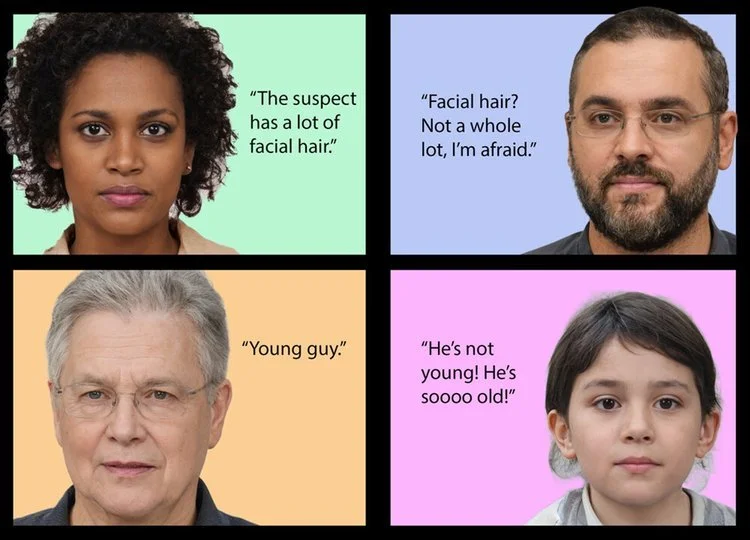Why Each Character's Point of View Matters In Your Story
Without a solid character foundation, your audience has no real way to ground themselves into your story. That is because characters are often the most relatable aspects of any novel. We want to follow the stories of those that speak to us – our similar feeling8s, our differences, our goals, and drives are all shown through the character’s struggles.
Characters that do have a strong framework are those that will be remembered and characters that an audience cannot connect with, well, those are easily forgettable.
The main goal of building strong characters is understanding perspective.
It is also important to acknowledge that it is not only the main character that matters. Each character adds value to the story but can also change the direction the story takes.
Character 1 may have a different motivation for helping your main character than Character 2, and the differences are related to how the story progresses.
When you understand each player, you are more likely to have a richer, more immersive story. To become great at characterization, you must first understand point of view.
Most writers know that point of view matters in a story, especially because they are one of the 8 elements of fiction writing.
They also understand that a story is typically the first person or third person, i.e. I walked out of the house versus Christina walked out of the house.
Occasionally, stories can be in the second person, i.e., you walked out of the house.
Writers may even be aware that perspectives, especially the main characters, can change throughout the story.
However, it is important to understand that character point of view is slightly different than the story’s point of view. The latter guides the story along while the former dictates how each character reacts and interacts in the narrative.
Here’s a more complete picture:
WHAT IS CHARACTER POINT OF VIEW?
The point of view refers to how the world looks from a character’s perspective.
In other words, the limitation on what they know. This can refer to feelings, information, or key actions that the character takes.
For example, here is passage in first-person limited point of view:
“He was an old man who fished alone in a skiff in the Gulf Stream and he had gone eighty-four days now without taking a fish. In the first forty days a boy had been with him. But after forty days without a fish the boy’s parents had told him that the old man was now definitely and finally salao, which is the worst form of unlucky, and the boy had gone at their orders in another boat which caught three good fish the first week. It made the boy sad to see the old man come in each day with his skiff empty and he always went down to help him carry either the coiled lines or the gaff and harpoon and the sail that was furled around the mast. The sail was patched with flour sacks and, furled, it looked like the flag of permanent defeat.”
As you can see, with a third person perspective, because the reader does not have to be directly in the head of the character, there is more room for descriptions and information on what other character’s might be thinking.
Of course, there are other types of point of view, such as third person omniscient or third person limited, even second person perspective.
WHY POINT OF VIEW MATTERS
Does it truly matter what point of view you use?
It depends on your writing goals and the overall purpose for telling your story.
Consider some of the following questions:
What do you want readers to take away from your story?
How many characters do you have?
How do your characters interact with one another?
How much information do you want readers to know?
Do you want the same point of view for the entirety of the book?
Etc.
These are just some of the questions you will need to ask yourself before you determine what point of view you want your character to have.
In short, point of view will help you better tell the story and meet the goals you have with your piece.
CHARTING OUT POINT OF VIEW
As mentioned, every single character in your story matters, whether they are the protagonist or a minor character that only appears in a chapter. Too often, I see a great deal of time being spent fleshing out the protagonist, but minor characters are completely forgotten.
Each character in your book must be so realistic they can cast their own shadow.
One of the most helpful tactics I have used in my own writing is stopping and considering what all characters think of each other.
This gives you an idea of just how different the characters are, even if the events that occur are already predetermined.
Here’s an example:
Suppose that a crime has occurred.
A group of four witnesses are asked to describe the following suspect:
Don’t worry the images in this book are not of real people but are generated with A.I. technology.
In any case, four characters describe the man above as followed:
Top left: “The Suspect has a lot of facial hair.”
Top Right: “Facial hair? Not a whole lot, I’m afraid.”
Bottom Left: “Young guy.”
Bottom Right: “He’s not young! He’s sooo old!”
As you can see, the perspective of the suspect changes depending on who is being asked.
A woman, that does not have facial hair, may consider any facial hair to be a lot. A man with a thicker beard might consider the suspect’s facial hair too sparse to note.
An older gentleman might consider this man young, while a child would consider him to be old.
Suppose that the suspect is then asked to describe each character?
What might he note?
What if these witnesses were asked to describe each other?
All the adults may describe the child as young, but could they distinguish what race she is?
What if the child was a boy instead of a girl?
What is the child’s exact age?
There is so much that goes into characterization, and people, by their nature are prone to making assumptions.
Therefore, I encourage you to consider individual character perspectives.
A good strategy is to use a chart like the above to map out how all your minor characters view the main character. There are many other helpful graphs in writing, such as a tension and time graph, and even different models to structure your story altogether.
In any case, characterization is what really helps your readers connect with your book. One of my consistently best-selling books is 1001 Questions to Help Flesh Out Your Character. That is because, as writers, we are on a constant quest to better understand the people we create.
This should be an ongoing process, because the more you answer these questions, the richer your characters will be.
































Discover top publishers for your horror stories, including Submission Grinder, The Horror Tree, and more. Find the perfect fit for your chilling tales.